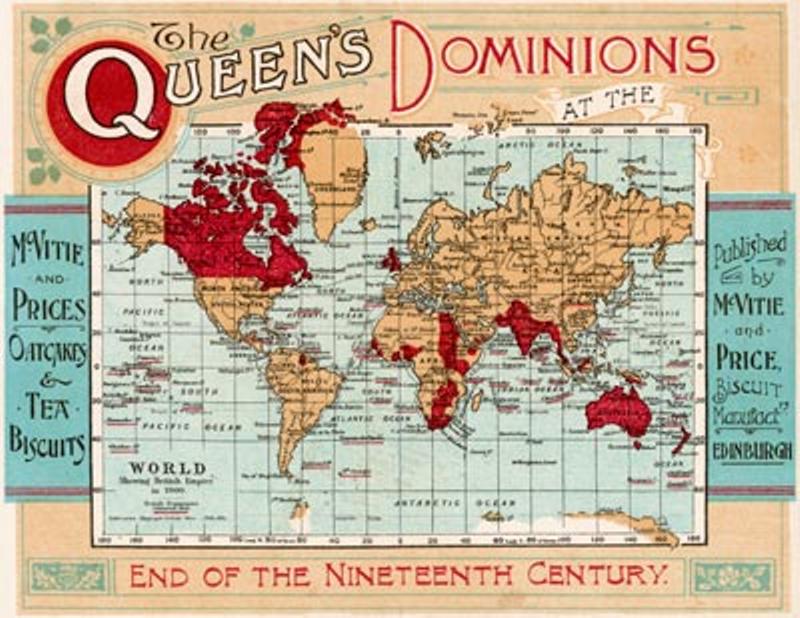Image: A map of the world at the end of the 19th century. Reproduced courtesy Mary Evans Picture Library.
Throughout the late 19th and 20th centuries mass emigration provided a foundation for Britain’s empire building.
Migrant populations provided much needed labour to exploit the colonies while they in turn offered alternative homelands for the people of Britain’s overcrowded cities. Child migration was a little known part of this story, when children as young as three were sent to countries such as Australia and Canada to build the population and work the land.
Child migration emerged as a solution to the deprivation, neglect and homelessness that was endemic in 19th century Britain. It became Government policy. When Canada and Australia became self-governing dominions in 1867 and 1901 they too supported child and youth migration as part of a broader platform to increase the white population. Child migrants became the ‘bricks’ upon which the British Empire would continue to be built.
Did you know?
 |
To let you know...
Orphans, waifs and strays
Today the term ‘orphan’ refers to a child who has lost both parents, but historically it was used to describe all children who were abandoned, illegitimate or in care. Terms such as ‘waif’ and ‘stray’ were also commonly used.
Child migrants were often labelled as orphans even though many simply had parents who were unable to look after them. They were placed in temporary care and later emigrated – or effectively deported – without their parents’ consent. So far the Child Migrants Trust has uncovered only one case of a genuinely orphaned Australian child migrant.
Sending organisations told children they were orphans to ensure they severed all ties with allegedly unworthy relations and made a fresh start. For former child migrants this deception caused tremendous pain and suffering and created great obstacles in reuniting with their families.

